
Snake restaurant in Hong Kong to close after 110 years, marking end of an era
Family-run She Wong Lam in Sheung Wan was hugely popular, with actor Stephen Chow a regular customer. But its snake handler is nearly 90, and no one in the family wants to continue the business
Family-run She Wong Lam was hugely popular in the 1960s and 1970s, but with no one from the family’s younger generation keen to continue the business of looking after snakes and preparing them for soup, the restaurant will close its doors on July 15.
Snake soup – not everyone’s idea of a winter warm
“Master Mak is almost 90 and he is the boss of the shop. He has worked for four generations of our family,” Lo says by phone from Vancouver, Canada. “Since my grandfather passed away, my father [Lo Yip-wing] didn’t know much about the snake business and I know even less,” he says.
His family trusts Mak but are unfamiliar with the shop’s other employees, making it hard for them to continue the business, he explains.
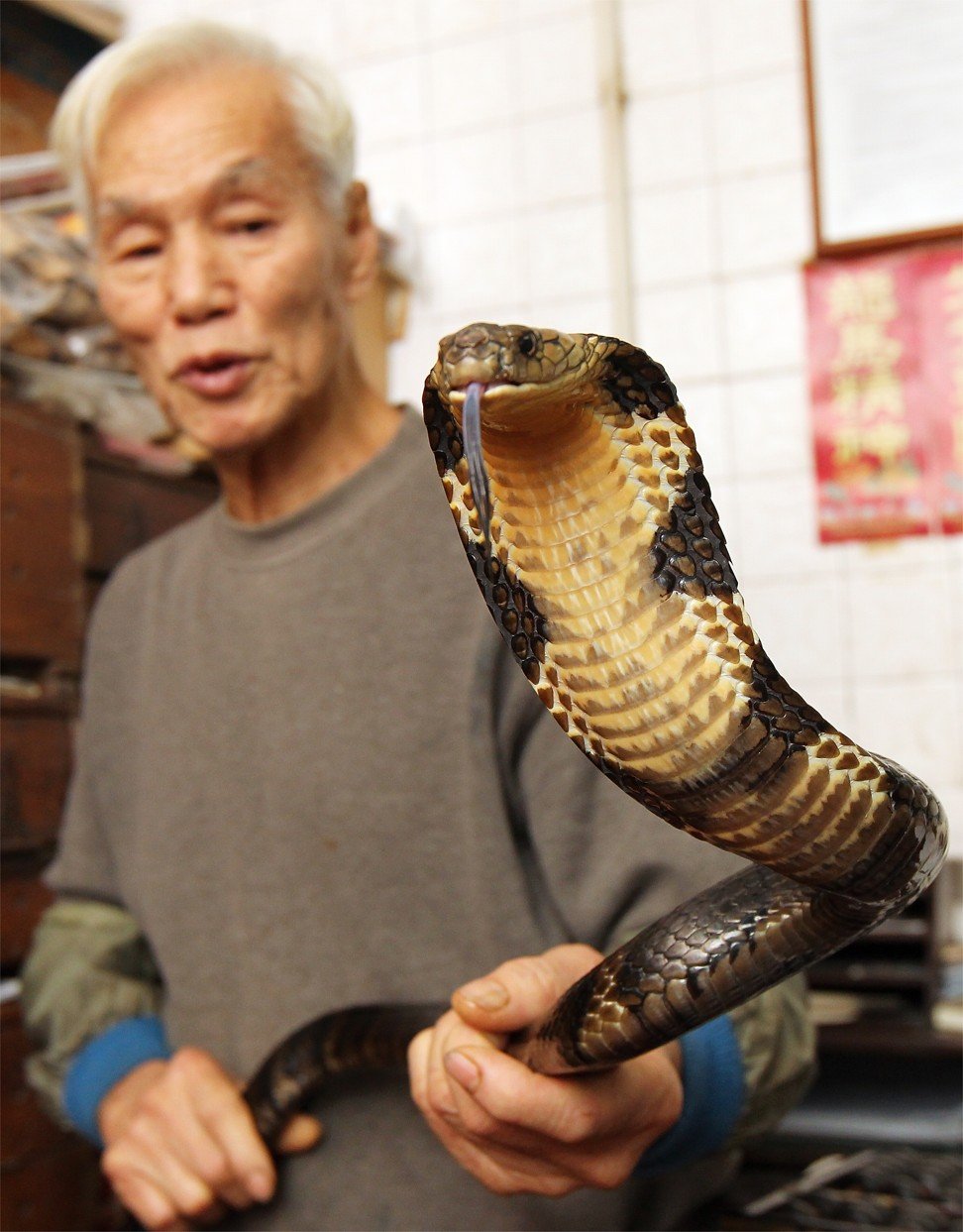
Lo says the date for closing She Wong Lam was chosen by his uncle and father, the latter now in an old people’s home in Hong Kong. Lo, an accountant, and his younger sister have lived in Vancouver since he was about eight years old and he does not intend to return.
“It’s very difficult to find people to work in this particular industry. It’s not for everyone,” Lo says.
Mak joined She Wong Lam in 1948, when he was 18 years old, and the founder, Lo Tai-lam, encouraged him to help out around the shop and eat snake soup to help build his strength.
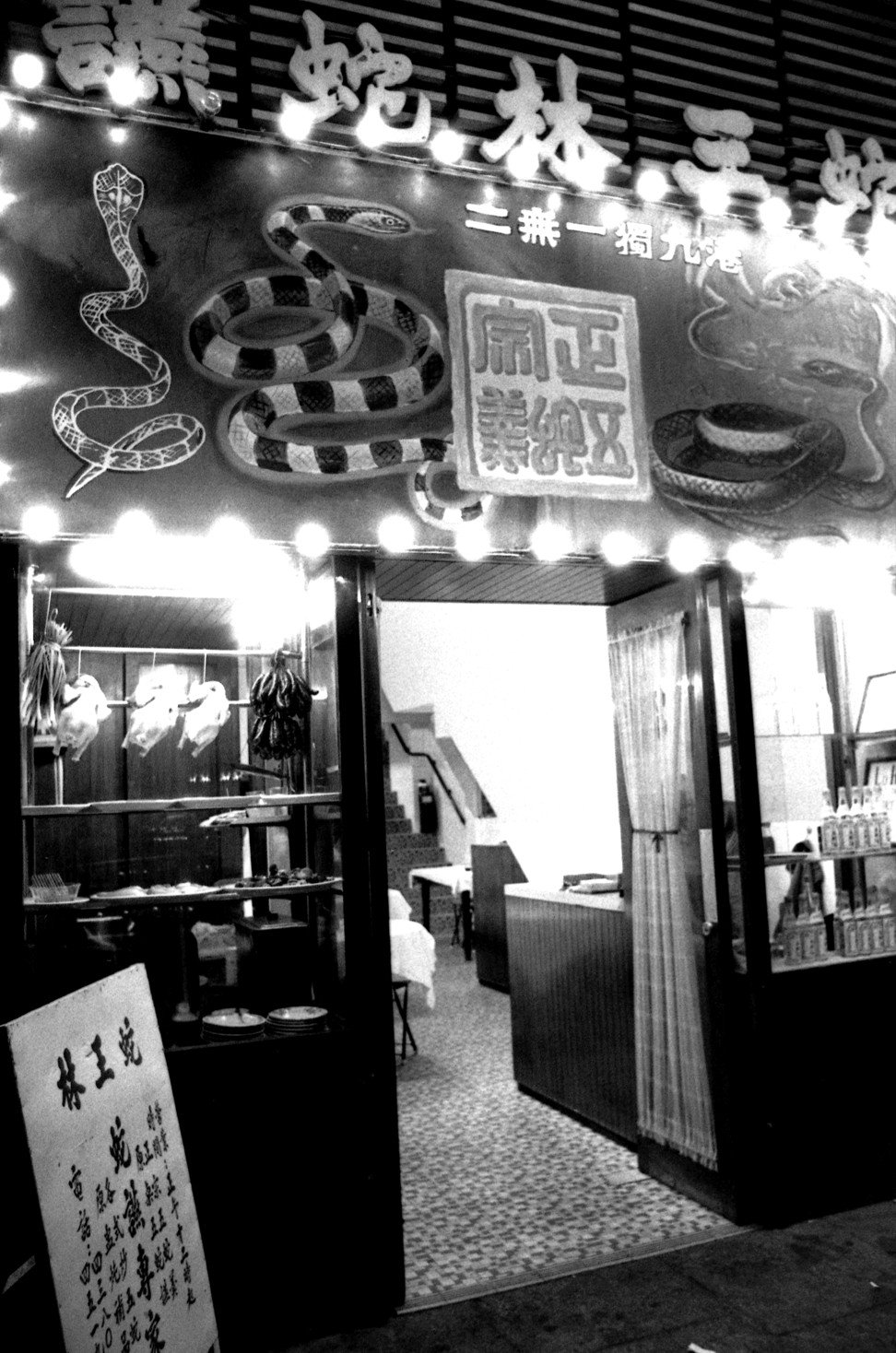
Mak gradually learned how to handle snakes, remove their fangs, extract the gallbladder, and make the shop’s signature snake soup.
The ingredients of snake soup include the meat of various snake species, chicken, pork, sugar cane, mandarin peel, and white pepper. It is garnished with chrysanthemum petals and finely sliced lemon leaves.
“In the past, when I saw my colleagues handling snakes, they told me I didn’t have to be afraid of them,” Mak said in an interview with the Post late last year.

“Once their fangs have been pulled out, they are not venomous … I remember my first attempts at handling snakes. I got bitten by them but it wasn’t painful at all. Since then, I have never been afraid of snakes.”
Sidney Cheung Chin-hung, professor and director of the Centre for Cultural Heritage Studies at the Chinese University of Hong Kong, has a copy of a flier from She Wong Lam promoting its snake gallbladder seasoned with ginger or pepper that dates back to 1910, and believes the shop was established in the early 1900s.
It’s very difficult to find people to work in this particular industry. It’s not for everyone
While fourth-generation owner Lo didn’t learn much about the snake business, he has a few fond memories to share about the business. The shop moved a few times during its more than 110-year history, but has always been in Sheung Wan. He also revealed how the shop got its name.
“My great-grandfather used to be busy in the back of the shop dealing with the snakes, and because people couldn’t see him, they assumed he was being lazy, which is why he got the nickname ‘Se Wong’, or ‘Snake King’,” says Lo. “She wong” is a Chinese euphemism for a lazy person.
Lo isn’t sure how or when his great-grandfather came to Hong Kong from the southern Chinese province of Guangdong, but Cheung is convinced the business was founded back in the dying days of the Qing dynasty.
How veteran snake handler overcame his fears
One of his former anthropology graduate students, Esther Chok Wing-sum, says that according to her research, one of the oldest snake shops in Guangzhou was Se Wong Man that was already in business by 1885 and after that several others followed suit and opened their own snake shops – there are no records to say exactly how many snake shops there were. At the turn of the century, many snake handlers, including Lo’s great-grandfather, brought their knowledge and skills to the British colony of Hong Kong.
The younger Lo attributes the family’s financial success to the hard work of his great-grandfather and grandfather. At one point She Wong Lam sold snake gallbladder and soup not only in Sheung Wan, but at two other locations in the city.
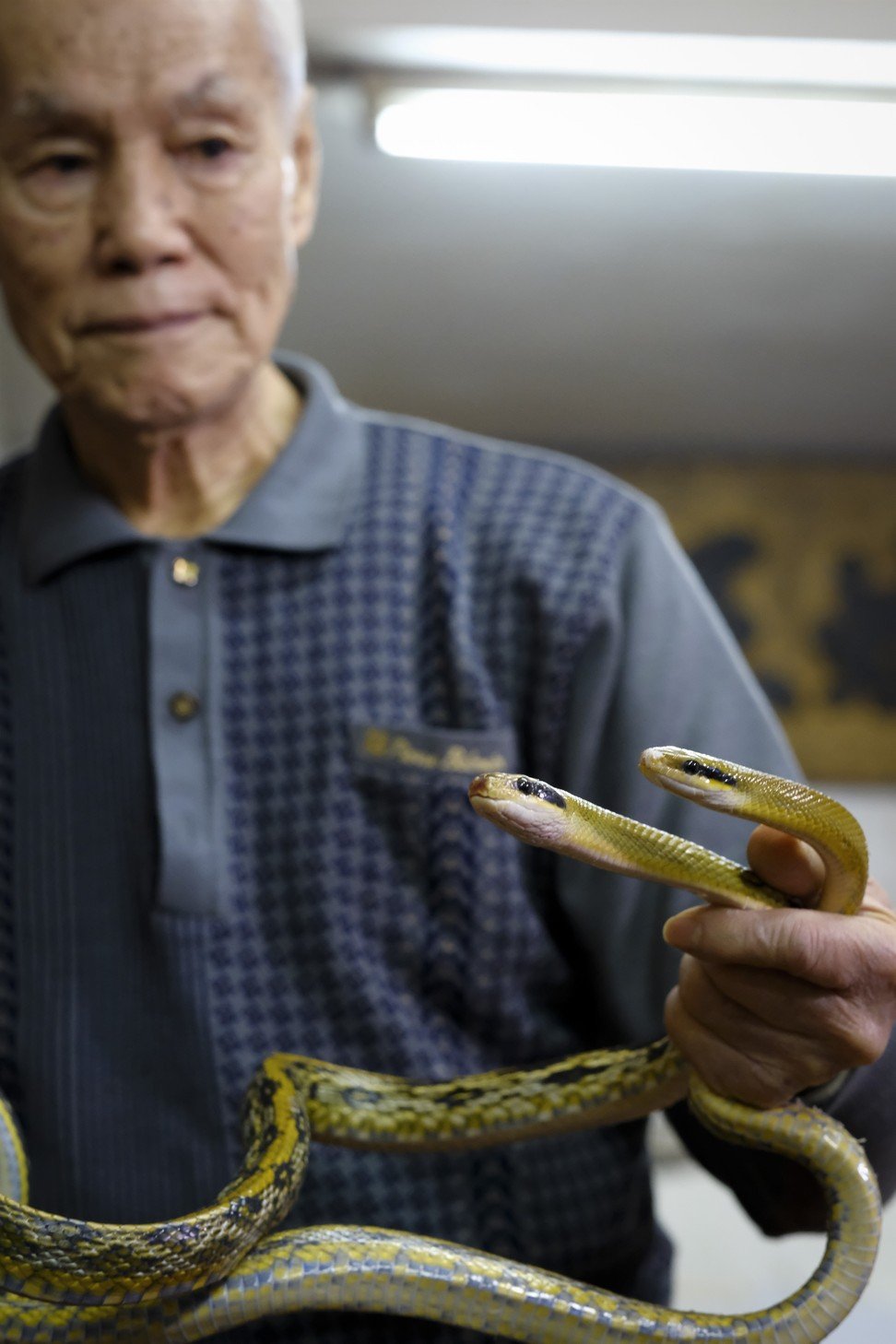
Hong Kong historian Cheng Po-hung says one of the shops was on the corner of Hennessy and Fleming roads in Wan Chai. The other was in Kowloon, he says, though no one we spoke to remembers the exact location.
Before the 1950s, Chok says, snake was a delicacy on par with shark’s fin and bird’s nest, which only the well-off could afford.
Snake soup and other food favourites of a Los Angeles native in Hong Kong
“A snake gallbladder was a few days’ salary at the time,” she explains. “It cost HK$20, but at that time the average person’s monthly salary was only HK$250.”
However, from the 1950s onwards, eating snake became increasingly affordable for the working class and grew more popular. “A bowl of snake soup would cost HK$8, and a serving of snake meat was HK$2-$3,” Chok says.
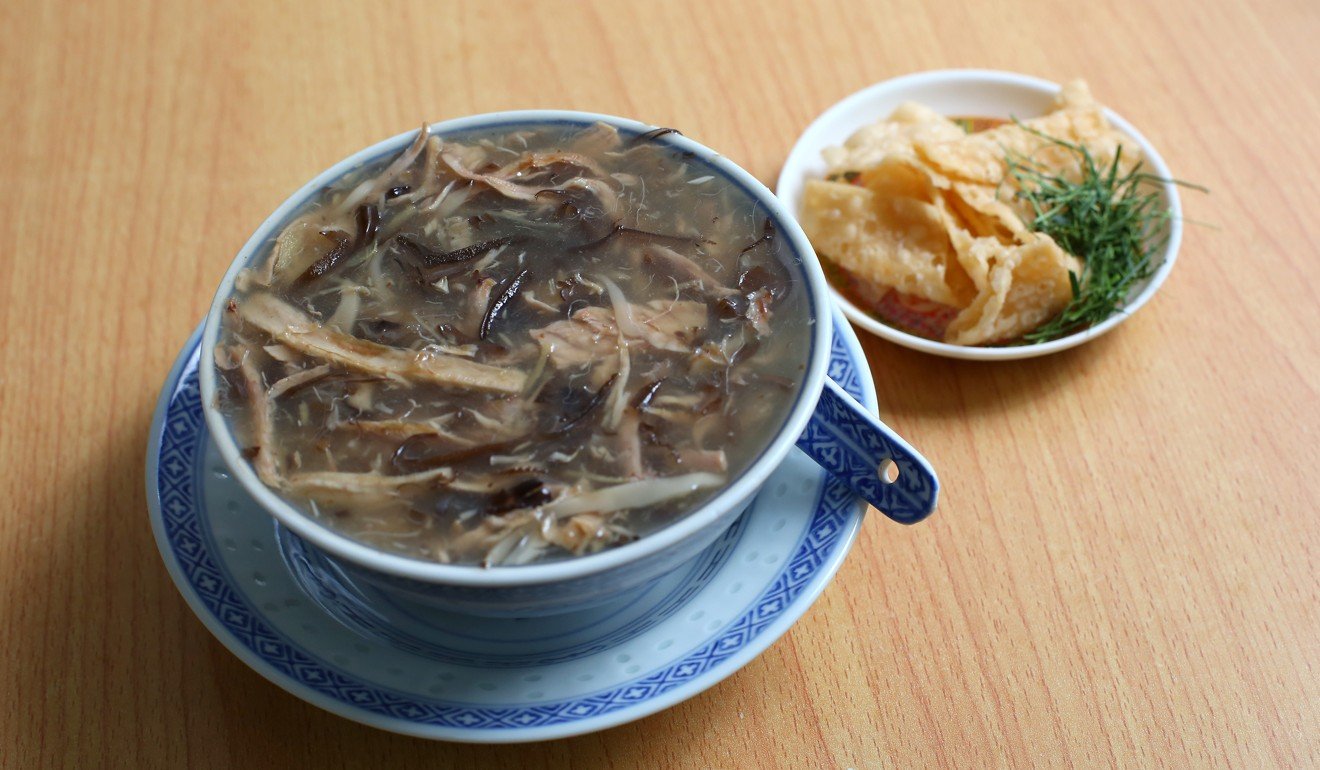
Lo says there was a Chinese opera theatre in Sheung Wan in the 1960s, close to She Wong Lam, and opera singers would patronise the shop regularly, downing snake gallbladder with alcohol to boost their stamina.
Celebrities such as actor Stephen Chow Sing-chi and former senior police officer Tsang Kai-wing (actor Eric Tsang Chi-wai’s father) were regular visitors. Lo says Chow would tell the staff to contact him when they had a particularly large cobra in stock, such was his appetite for the snake.
Historian Cheng says he has tried the reptile’s gallbladder, which his friends used to buy regularly from other snake shops. “They put it in a spoon, or a shot glass, and added alcohol to it,” he says.
A tale of snakes and bladders
“One time a group of us drank the gallbladder of three different snakes mixed with alcohol … it was translucent green in colour and tasted bitter. People think it helps you become physically stronger, but the gallbladder has bacteria in it,” he says.
Despite She Wong Lam’s success, Lo’s elders were acutely aware of how important it was that a member of the next generation learn the snake trade if the business was to continue.
“My great uncle asked me when I was in my 20s if I would go into the business, otherwise no one else would do it. But I have my life in Canada. I’m 50 years old now and I don’t even live there [in Hong Kong],” he says.
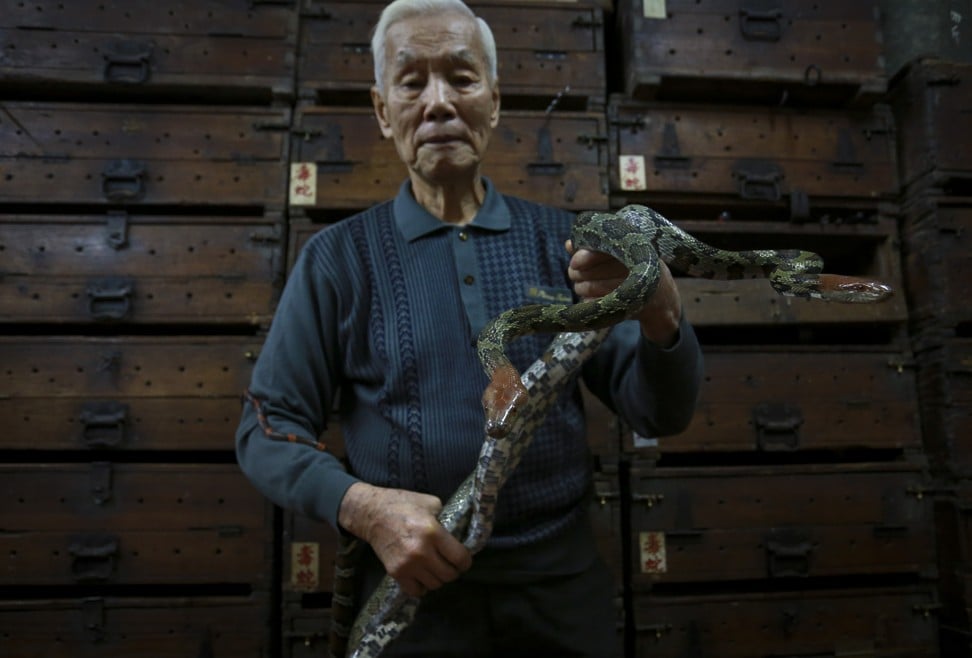
Lo points out that other traditional trades in Hong Kong, such as making lanterns, bamboo noodles, hand-carved mahjong tiles, and neon signs, are also disappearing.
The younger generation move away and can’t come back. [Old] Hong Kong will disappear
“The younger generation move away and can’t come back,” he says. “[Old] Hong Kong will disappear and instead have shops like Zara, McDonald’s and Fairwood, especially with rent being so expensive.”
A search on restaurant guide OpenRice shows 36 restaurants with the Chinese character for “snake” in their name still open in Hong Kong, at least four of them with more than one location. They may not necessarily be specialists like She Wong Lam, however, nor have live snakes on the premises.
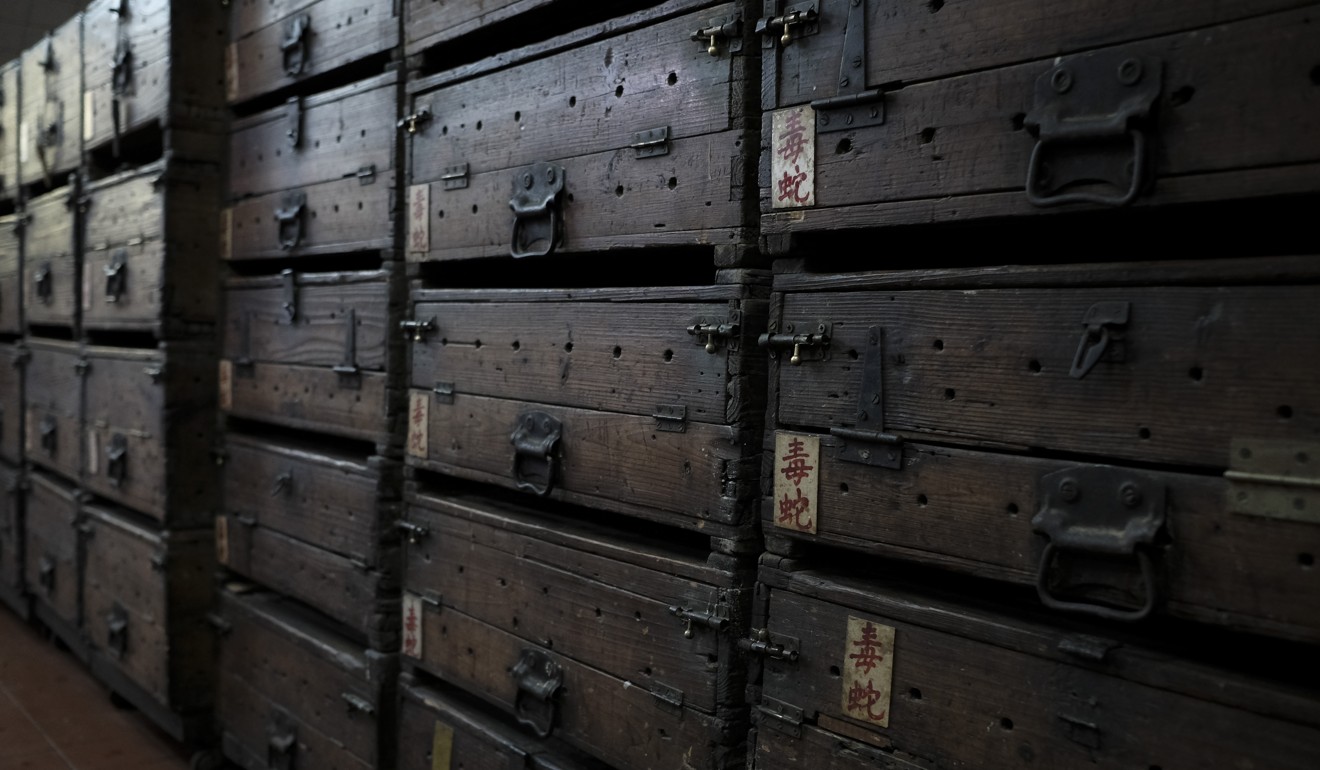
Historian Cheng thinks there is still a decent number of places to get a bowl of snake soup, and doesn’t expect them all to close any time soon. He says the owners of Shia Wong Hip in Sham Shui Po, for example, have taught their siblings the snake trade, and adds there are still many snake shops in that neighbourhood and in Yau Ma Tei.
After the closure of She Wong Lam, the Lo family, which owns the shop space, will rent it out. In the meantime, Lo says, they have contacted the Hong Kong Museum of History about collecting the snake cabinets, cages and tables. The wooden cabinets are more than 100 years old.
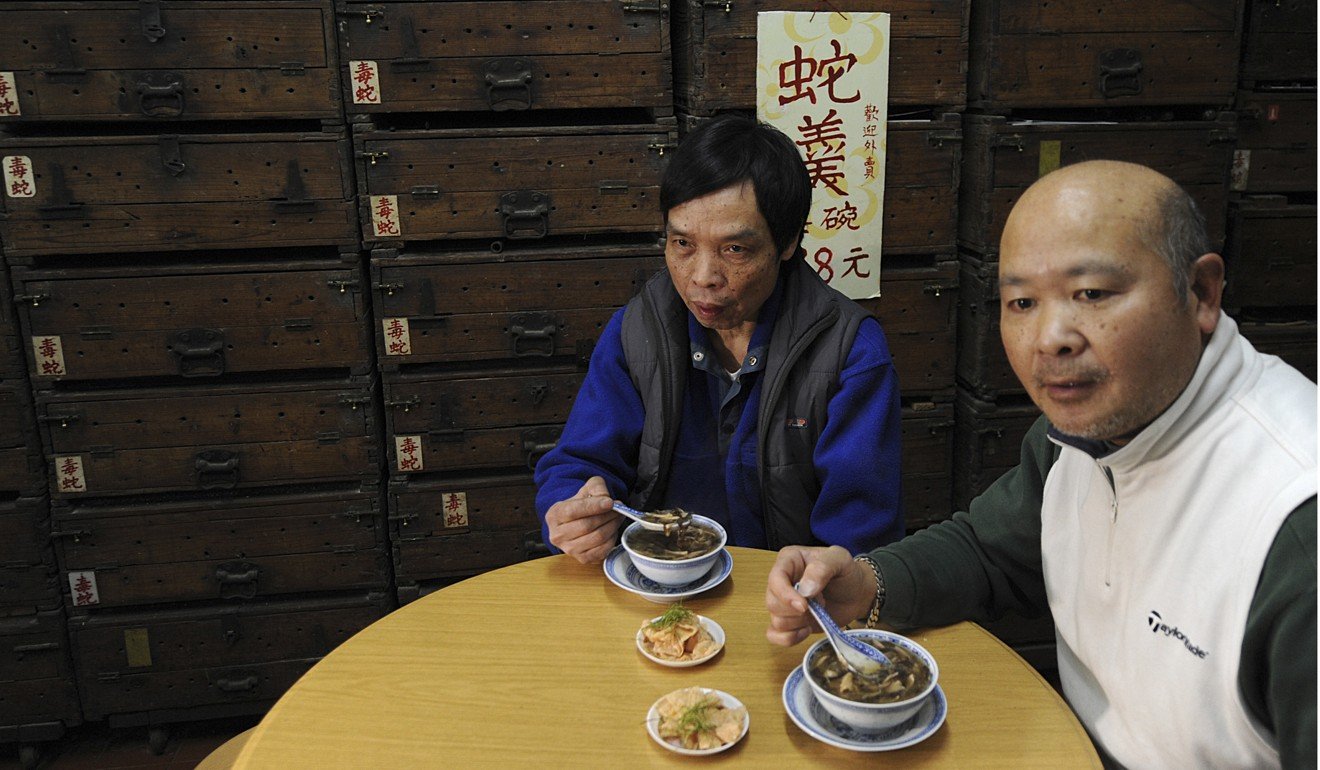
Lo says Mak designed his own pocket knife to make a sharp slit to extract the snake’s gallbladder, and to skin it quickly and efficiently. According to Cheng, designing their own knives is common practice among those in the snake business.
For Lo, the closure of She Wong Lam is also the end of a long chapter in the family’s history, and tinged with sadness. Five years ago, Hong Kong public broadcaster RTHK made a documentary featuring Lo and his son Lo Yun-hei, then three years old, visiting the shop. At the time he hoped the business would continue to the fifth generation.
Inside China: farming snakes for medicine, meals and money

